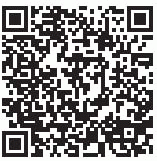L5 Radiculopathy (Disc Herniation)
OBJECTIVES
To review risk factors for lumbar disc herniations.
To review the clinical presentation of lumbar radiculopathies.
To discuss the most common etiologies of lumbar radiculopathy.
To review the management of lumbar disc disease with sciatica.
VIGNETTE
A 31-year-old man developed left buttock and low back pain approximately 1 month earlier. The patient noted that at times the pain was severe and limited his walking and his ability to sit. He had no numbness or weakness; however, he had limitation of movement of his left leg secondary to his pain. He described the pain as a tight feeling on his left buttock shooting down his leg and sometimes up his back when standing or when sitting for prolonged periods. Alleviating factors were sitting with his hip flexed and internally rotated. He also noted relief
with Percocet that lasted approximately 3 to 4 hours but did not completely alleviate the pain. He had no loss of bowel or bladder function. He has taken naproxen and cyclobenzaprine in the past with no benefit. He also received acupuncture over the past month with no benefit.
with Percocet that lasted approximately 3 to 4 hours but did not completely alleviate the pain. He had no loss of bowel or bladder function. He has taken naproxen and cyclobenzaprine in the past with no benefit. He also received acupuncture over the past month with no benefit.
 |
Low back pain is extremely common, but only a fraction of patients experiencing low back pain during their lifetime have lumbar radiculopathy or sciatica as a consequence of root irritation or compression. Herniation of a lumbar intervertebral disc is one of the most common causes of root compression. The avascular (in adults) biconcave intervertebral discs are located between adjacent vertebral bodies. The intervertebral disc consists of three components: an outer multilaminated annulus fibrosus, the inner gelatinous nucleus pulposus, and the superior and inferior end plates. Most lumbar disc herniations occur between the fourth and fifth lumbar or the fifth lumbar and first sacral interspaces. The spinal nerves exit the spinal canal through the foramina at each level. A disc herniation most frequently irritates the displaced nerve root. Most discs rupture in a posterolateral direction. The incidence of disc rupture is the same among men and women.
The distribution of the leg pain is dependent on the level of nerve root irritation or compression. Radicular or root pain results from inflammation of the nerve root, which has a characteristic burning or lancinating quality. The pain is generally accompanied by dermatomal sensory loss, paresthesias, or dysesthesias. A pain drawing can be very helpful in assessing the dermatomal distribution. Compression of a motor nerve results in weakness, and compression of a sensory nerve results in numbness. Often, accompanying numbness or tingling occurs with a distribution similar to the pain. Nerve root tension signs are used in the evaluation of these patients. A positive straight leg raising sign, also known as Lasègue sign, is almost always present. However, a crossed straight leg raising sign may be even more predictive of a lumbar disc herniation. In this test, straight leg raising of the contralateral limb elicits more specific but less severe pain on the affected side. The back may appear scoliotic. Gait is often abnormal. Muscle weakness may be revealed, particularly when walking on heels and toes.
Stay updated, free articles. Join our Telegram channel

Full access? Get Clinical Tree








